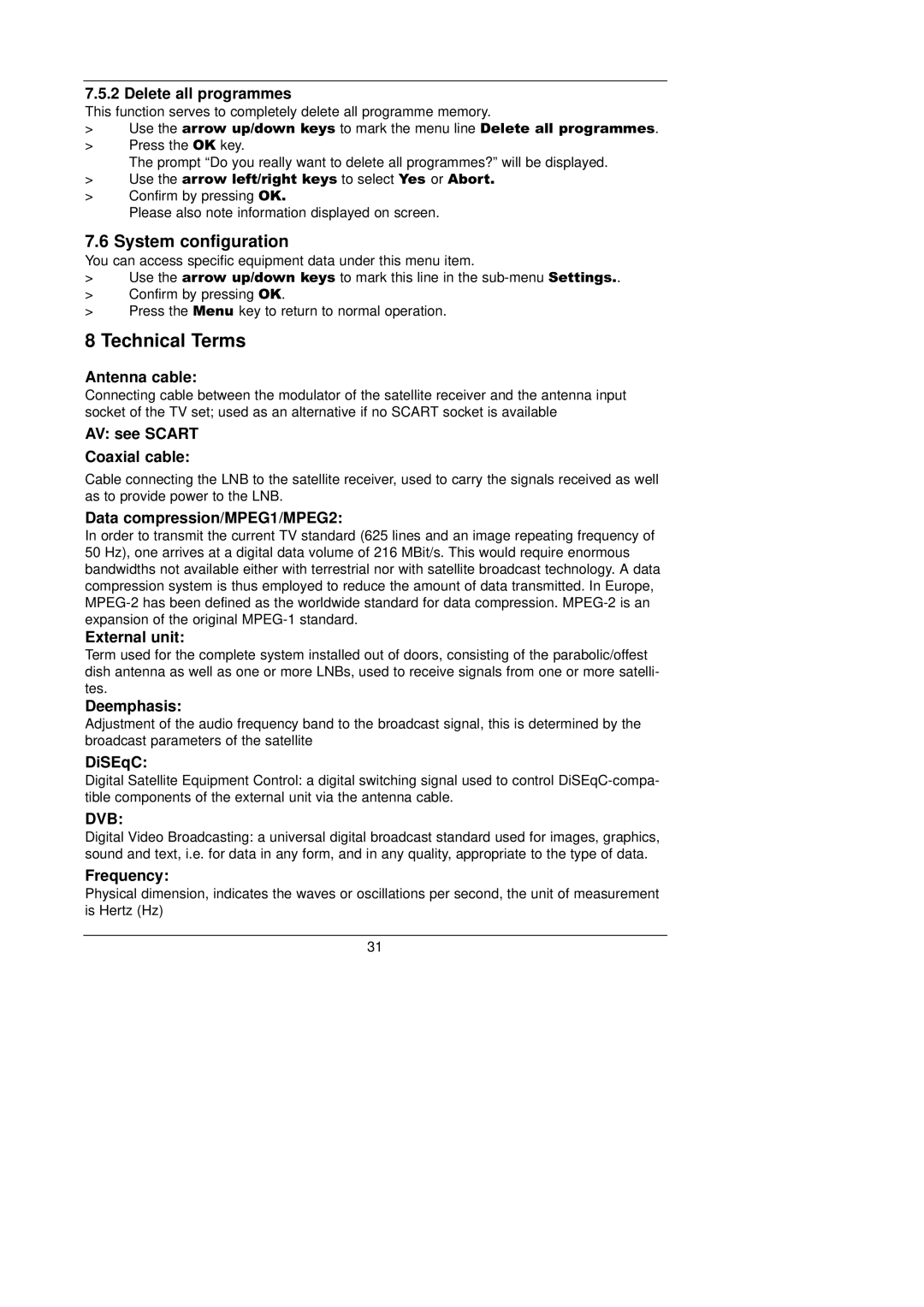
7.5.2 Delete all programmes
This function serves to completely delete all programme memory.
>Use the arrow up/down keys to mark the menu line Delete all programmes.
>Press the OK key.
The prompt “Do you really want to delete all programmes?” will be displayed.
>Use the arrow left/right keys to select Yes or Abort.
>Confirm by pressing OK.
Please also note information displayed on screen.
7.6 System configuration
You can access specific equipment data under this menu item.
>Use the arrow up/down keys to mark this line in the
>Confirm by pressing OK.
>Press the Menu key to return to normal operation.
8 Technical Terms
Antenna cable:
Connecting cable between the modulator of the satellite receiver and the antenna input socket of the TV set; used as an alternative if no SCART socket is available
AV: see SCART
Coaxial cable:
Cable connecting the LNB to the satellite receiver, used to carry the signals received as well as to provide power to the LNB.
Data compression/MPEG1/MPEG2:
In order to transmit the current TV standard (625 lines and an image repeating frequency of 50 Hz), one arrives at a digital data volume of 216 MBit/s. This would require enormous bandwidths not available either with terrestrial nor with satellite broadcast technology. A data compression system is thus employed to reduce the amount of data transmitted. In Europe,
External unit:
Term used for the complete system installed out of doors, consisting of the parabolic/offest dish antenna as well as one or more LNBs, used to receive signals from one or more satelli- tes.
Deemphasis:
Adjustment of the audio frequency band to the broadcast signal, this is determined by the broadcast parameters of the satellite
DiSEqC:
Digital Satellite Equipment Control: a digital switching signal used to control
DVB:
Digital Video Broadcasting: a universal digital broadcast standard used for images, graphics, sound and text, i.e. for data in any form, and in any quality, appropriate to the type of data.
Frequency:
Physical dimension, indicates the waves or oscillations per second, the unit of measurement is Hertz (Hz)
31
